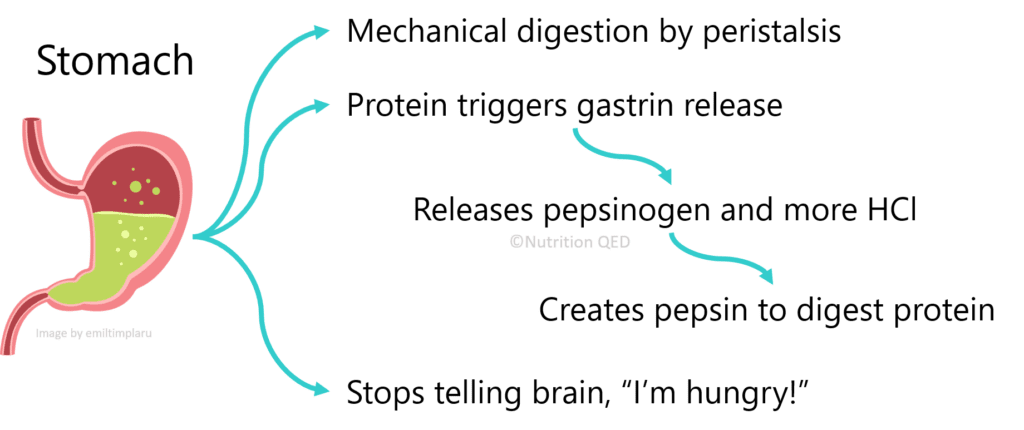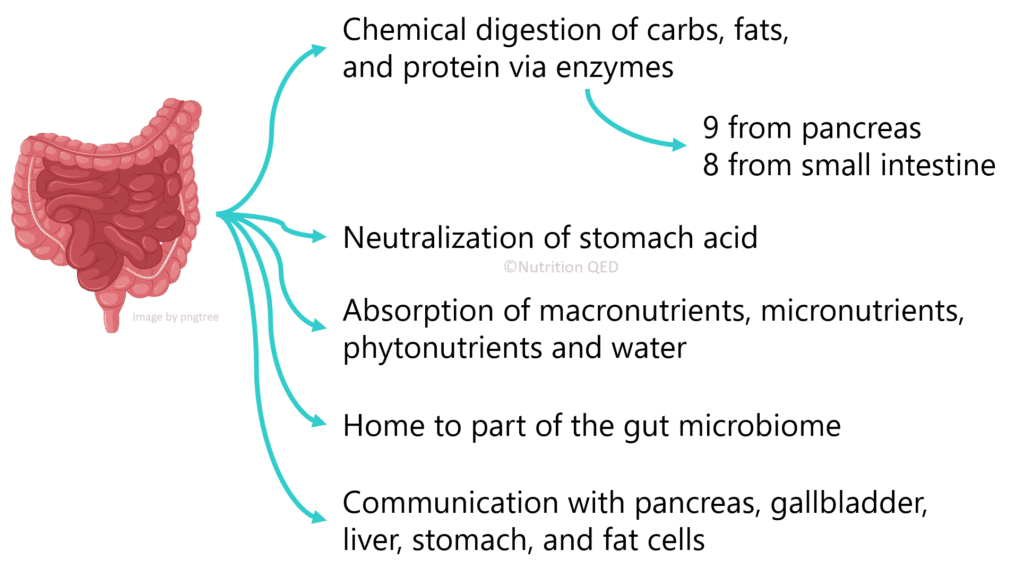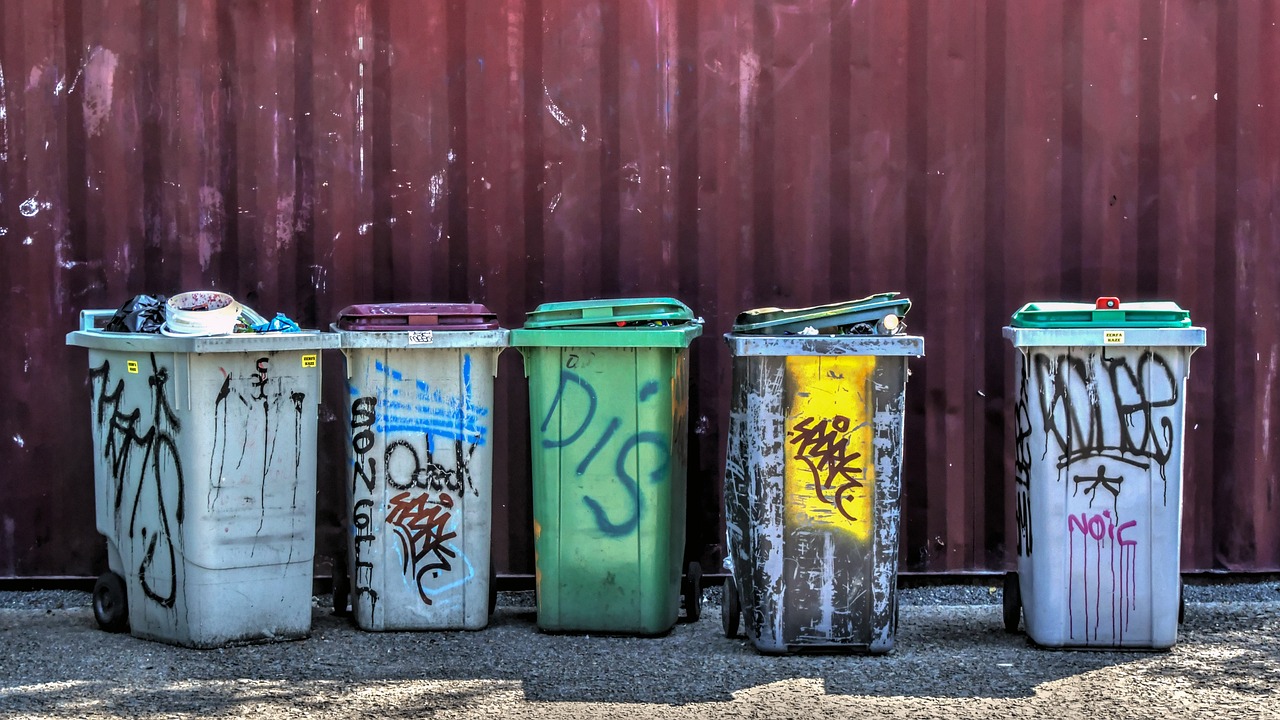When someone discovers I am a registered dietitian nutritionist (RDN), they often dive into questions about specific foods, diets or supplements they’ve heard about. I absolutely adore these conversations because I’m passionate about all things nutrition, including the intricate dance of digestion! In these discussions, I delve into why the food, diet or supplement may or may not align with an individual’s unique needs, preferences, and lifestyle.
At the foundation of our nutritional journey lies an understanding of human biochemistry and physiology. Our ultimate aim? Personalized nutrition that propels us to optimal vitality. To embark on this journey effectively, it’s crucial to comprehend how digestion occurs. Armed with this knowledge, you can assess the efficiency of your digestive system and explore avenues for improvement through lifestyle adjustments, dietary tweaks, and, if necessary, supplements.
Introduction to Digestion
When we eat, our digestive system must execute a remarkable and complex process to break down our food into absorbable nutrients that fuel our bodies. This vital process, known as digestion, relies on the orchestration of hundreds of hormones, enzymes, and cofactors. If any one of these components falter, our digestion will be compromised, potentially leading to discomfort or, at worst, jeopardizing our health.
Join me as we unravel the fascinating interplay between the foods we eat and our extensive digestive system, so we can make informed choices as we nourish ourselves!
Phase 1: Brain, Eyes and Nose
Did you know that the mere thought, scent, or sight of food can kickstart your digestive system into action? It’s true! Merely discussing tantalizing dishes, inhaling food-related aromas, or feasting your eyes on delectable treats triggers the activation of the parasympathetic nervous system. This system, responsible for rest and digestion, primes your upper digestive tract for action by prompting your salivary glands to release extra saliva and your stomach to churn out acid.
Phase 2: Mouth
While we might not typically consider our mouths as part of the digestive system, they play a pivotal role in initiating digestion, wielding a significant impact on our digestive health. Chewing, the initial step in breaking down food into smaller, more manageable pieces, is essential for efficient chemical digestion and optimal nutrient absorption. As we chew, saliva coats our food, kickstarting chemical digestion with enzymes like salivary amylase, which breaks down carbohydrates, and salivary lipase, responsible for digesting fats.

Moreover, the act of chewing acts as a catalyst, signaling the rest of the digestive system to gear up for action once we swallow. A cascade of enzymes and hormones are released throughout your abdomen that allow digestion to proceed unimpeded. From chewing alone, the following events occur:
- The stomach releases hydrochloric acid and stops producing ghrelin.
- The pancreas secretes enzymes and bicarbonate.
- The intestines emit the hormones cholecystokinin, glucagon-like peptide, and peptide YY.
Phase 3: Stomach
Once the bolus, a ball-like mixture of food and saliva, is swallowed, it travels down the esophagus and enters the stomach via the lower esophageal sphincter. Inside the stomach, the mechanical breakdown of food continues as the stomach muscles contract and relax in rhythmic waves known as peristalsis. This motion helps propel food through the digestive tract.

In the stomach, the presence of protein triggers the release of gastrin, a hormone that stimulates the secretion of hydrochloric acid (HCl) and pepsinogen. When HCl interacts with pepsinogen, it transforms into pepsin, the primary enzyme responsible for breaking down proteins. Interestingly, while protein digestion kicks into high gear, carbohydrate digestion temporarily halts in the stomach due to the inactivation of salivary amylase by HCl.
Additionally, the stomach serves as a site for absorption, primarily of small molecules that require no further digestion. These include water, certain medications (such as aspirin), amino acids (the building blocks of proteins), alcohol, caffeine, and some water-soluble vitamins.
The final important role that the stomach plays in nourishing our bodies is the release of ghrelin, a hormone that signals to the brain that we are hungry. When the stomach stops producing this hormone, our brain no longer receives the message that we need to eat. I always thought our stomach tells our brain when we are hungry, but in reality our stomach is constantly telling our brain we are hungry unless we are chewing and then it stops for a period of time.
Once the stomach completes its digestive tasks, the chyme, a pulpy acidic fluid, exits the stomach and enters the small intestine for phase 4 of digestion. When the stomach is emptied, a hormone called somatostatin is released by D cells in the stomach and pancreas to tell the acid producing parietal cells in the stomach to stop. This is crucial to maintain a healthy digestive tract, as HCl is an incredibly strong acid and we don’t want the digestive system to digest itself!
Phase 4: Small Intestine, Pancreas, Liver and Gallbladder
The small intestine takes center stage in the digestion saga, with supporting roles played by the pancreas, liver, and gallbladder. Here, the bulk of digestion is completed, and nearly all nutrients, from macronutrients to micronutrients and phytonutrients, are absorbed. As well, the small intestine is home to a part of our gut microbiome, that is the collection of mostly helpful bacteria, fungi, and bacteriophages that live in our intestines.

To accomplish these daunting tasks, the small intestine is not a straight tube, but rather a 22 foot-long scrunched up tube whose folds are covered with countless tiny projections called villi and microvilli, similar to deep-pile carpet. All of these folds and finger-like projections give the small intestine a total surface area equivalent to the size of a tennis court!
The duodenum, the initial segment of the small intestine, receives the chyme from the stomach and uses uncoordinated contractions to move the chyme back and forth, mixing it with enzymes and digestive juices. Here’s a list of the organs and their secretions involved in digestion in the duodenum and jejunum, the next segment of the small intestine:
- The pancreas creates the following enzymes or their precursors, which are then activated in the small intestine:
- Amylase for starch breakdown,
- Carboxypeptidase, chymotrypsin, trypsin and elastase for digesting proteins and peptides,
- Colipase, lipase, and phospholipase for breaking down fats,
- Nucleases to breakdown the DNA and RNA found in food, and
- Bicarbonate to neutralize the acidic chyme and protect the digestive tract.
- The small intestine secretes:
- Maltase, sucrase and lactase to break the simple carbohydrates maltose, sucrose and lactose into glucose, fructose, and galactose molecules,
- α-Dextrinase to breakdown α-dextrins into glucose molecules,
- Enteropeptidase to activate trypsin from the pancreas,
- Peptidase for splitting dipeptides into two single amino acids,
- Nucleosidases and phosphatases to breakdown the nucleotides DNA and RNA.
- The liver produces bile, which is stored in the gallbladder and released into the small intestine to aid in fat digestion.
Besides digestion, the duodenum is responsible for absorbing some of the monosaccharides glucose, fructose and galactose, as well as many vitamins and minerals, including most of the iron, calcium, phosphorus, magnesium, copper, selenium, thiamin, riboflavin, niacin, biotin, folate, and vitamins A, D, E, and K.
Finally, the small intestine is responsible for communicating with other organs and cells via hormones so digestion and nutrient absorption are successful. Namely, the duodenum secretes:
- secretin which stimulates the pancreas to release bicarbonate and tells the stomach to stop secreting gastrin,
- cholecystokinin (CCK) that triggers the gallbladder to release bile and the pancreas to send in enzymes and bicarbonate,
- glucose-dependent insulinotropic peptide or gastric inhibitory peptide (GIP)which slows the stomach’s emptying when the small intestine is already full of chyme, tells the pancreas to release insulin so cells can receive glucose, and stimulates adipocytes (or fat cells) to take triglycerides from the blood’s VLDL,
- glucagon-like peptide 1 (GLP-1) that stimulates the pancreas to release insulin while simultaneously telling it not to secrete glucagon, preventing glucose release from the liver, and
- peptide YY (PYY) which tells the brain that we are full.
The second segment, called the jejunum, completes the digestion of lipids (or fats), and the biproducts of fat and protein digestion, namely glycerol, free fatty acids, small peptides, and amino acids, are absorbed into the body. Any remaining simple carbs are also pulled into the small intestine’s cells, as are some phytonutrients and most micronutrients, including thiamin, riboflavin, niacin, pantothenate, folate, vitamin B6 (pyridoxine), biotin, vitamin C, calcium, phosphorus, magnesium, iron, zinc, chromium, manganese, molybdenum, and vitamins A, D, E, and K.
The ileum is the last segment of the small intestine, where bile salts and acids, which were used for fat digestion, are reabsorbed into the body. As well, vitamin C, folate, vitamin B12 (cobalamin), vitamin D, vitamin K, and magnesium are absorbed here. The ileum also produces the hormone neurotensin (NT) which slows small intestine peristalsis and tells the pancreas and the gallbladder to continue sending out their digestive juices until digestion is complete.
Phase 5: Large Intestine
Now, let’s journey into the realm of the large intestine, where the final act of digestion unfolds. As chyme enters the cecum, the initial section of the large intestine, it signifies the culmination of the digestive process by the small intestine. By this time, most nutrients and water have been absorbed, leaving behind remnants that the body cannot digest either at all (hello, fiber!) or in part (lactose intolerance, anyone?).

Enter the colon, a 5-foot long tube teeming with trillions of beneficial bacteria. These microbial residents are adept carbohydrate fermenters, yielding valuable byproducts such as short-chain fatty acids (SCFAs), vitamin K, B vitamins, and absorbable phytonutrient fragments through their metabolic activities. As chyme traverses the colon, these microbial metabolites, along with residual water and electrolytes, are absorbed into the body, contributing to overall health.
Once the microbiota have had their feast and the intestine has absorbed all it can, the remaining material advances into the descending colon, where it undergoes compaction and lubrication facilitated by mucosal secretions. Gradually, the waste travels to and through the sigmoid colon, ultimately reaching the rectum, where it awaits evacuation under the signal of the brain, completing the digestive journey.
Conclusion
Understanding the intricacies of digestion gives us profound insight into the remarkable interplay between the foods we consume and our bodily functions. Armed with this knowledge, we possess the ability to make informed choices about our dietary habits, paving the way for optimal wellness through personalized nutrition tailored to our individual needs and preferences.
By embracing the principles of digestive health and nutrition science, we embark on a journey towards vitality and well-being, fueled by a deep understanding of our bodies’ inner workings. Let’s continue to explore, learn, and adapt, empowering ourselves to thrive on the path to holistic wellness.
Notes:
- There are many other hormones and neuropeptides released by the gastrointestinal tract. However, in an effort not to turn this article into a college level biochemistry book, I have chosen not to mention them because: a) the organ that produces them is also the recipient, such as substance P that is produced by the small intestine to tell the small intestine muscles to contract, or b) the GI tract is not the primary producer in the body, as is the case with beta-endorphin whose main point of production is the brain.
- The GI tract also plays an important role in detoxification and immune health, which are intricately connected with but separate from digestion.
- This article is intended for informational purposes only and does not constitute medical advice. Always seek the guidance of a qualified healthcare provider for any questions or concerns regarding your health.
Image by Stephanie Dunne.
Sources:
— SUNY ER services. Anatomy and Physiology II. Chemical Digestion and Absorption: A Closer Look. Accessed April 11, 2024.
— Feldman M, Richardson CT. Role of thought, sight, smell, and taste of food in the cephalic phase of gastric acid secretion in humans. Gastroenterology. 1986;90(2):428-33.
— Bhutta ZA, Sadiq K. Protein Digestion and Bioavailability. Encyclopedia of Human Nutrition: 3rd Ed. Academic Press; 2013. ISBN 9780123848857.
— UC Davis Library. An Introduction to Nutrition. 5.4: Digestion and Absorption of Lipids. Accessed April 11, 2024.
— BC campus. Concepts of Biology. 15.4 Digestive System Regulation. Accessed April 12, 2024.
— Children’s Hospital of Pittsburgh. Difference Between Small and Large Intestine. In Intestine Transplant. Accessed April 12, 2024.
— Utiger RD. “Secretin”. Encyclopedia Britannica, March 29, 2019. Accessed April 12, 2024.
— Basile EJ, Launico MV, Sheer AJ. Physiology, Nutrient Absorption. StatPearls [Internet]. October 28, 2023. Accessed April 12, 2024.
— Waasdorp Hurtado C. Carbohydrate Digestion and Absorption. NASPGHAN Physiology Series. Accessed April 15, 2024.
— Irwin N, Flatt PR. Gastric Inhibitory Polypeptide. Handbook of Biologically Active Peptides:2nd Ed. Academic Press; 2013. ISBN 9780123850959.
— Parikh A, Thevenin C. Physiology, Gastrointestinal Hormonal Control. StatPearls [Internet]. May 1, 2023. Accessed April 15, 2024.
— Pirahanchi Y, Anoruo M, Sharma S. Biochemistry, Lipoprotein Lipase. StatPearls [Internet]. July 30, 2023. Accessed April 15, 2024.
— Kan J, Wu F, Wang F, Zheng J, Cheng J, Li Y, Yang Y, Du J. Phytonutrients: Sources, bioavailability, interaction with gut microbiota, and their impacts on human health. Front Nutr. 2022;9:960309.
— Jensen BAH, Heyndrickx M, Jonkers D, Mackie A, Millet S, Naghibi M, Paerregaard SI, Pot B, Saulnier, D, Sina C, Sterkman LGW, Van den Abbeele P, Venlet NV, Zoetendal EG, Ouwehand AC. Small intestine vs. colon ecology and physiology: Why it matters in probiotic administration. Cell Rep Med. 2023 Sep 19;4(9):101190.




